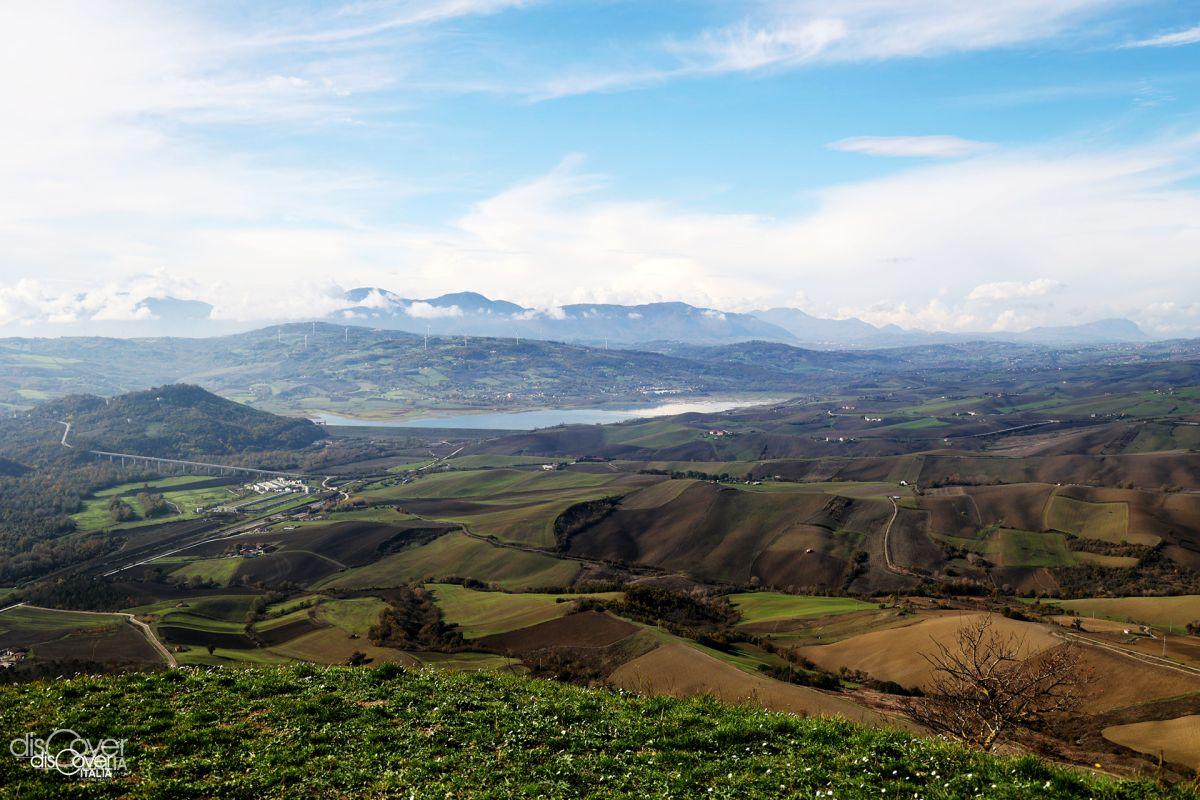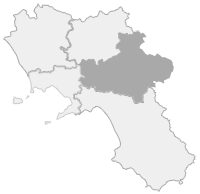It is defined as an "area of scientific interest of the WWF".
And it is not difficult to understand this, considering the extraordinary biological variety that characterizes that wetland created just fifty years ago, when the construction of the dam flooded part of the Ofanto alluvial plain. Until that moment, it had been occupied by pastures, cultivated land and groves of poplars and other tree species widespread in the area. Since then, the presence of water has attracted the most diverse species of aquatic birds to the artificial lake. They found there an ideal resting place along the seasonal migratory routes. Then, hand in hand with the multiplication of animal species, there also occurred that of hygrophilous plant species, i.e. typical of aquatic and humid environments. Over time, the WWF's activity has also taken the form of the reintroduction of the white stork, at the center of a repopulation project aimed at bringing it back permanently to Irpinia, where it was once at home.
The fauna
The vast marshy basin, which changes in level depending on the functioning of the dam with consequent changes in the landscape, hosts as many as 140 species of water birds, mostly migratory, but also sedentary and in fact it is one of the most important nesting places of different varieties of herons (heronry) of the South. Among the species that frequent the oasis there are Purple Heron, Short-toed Eagle, European Roller, Ferruginous Duck, Bittern, Little Bittern, Little Grebe, Spoonbill, Little Grebe, Great Crested Grebe, Water Rail, Sandpiper, Hobby, Shelduck and, among the birds of prey, the Peregrine falcon and the Osprey. In the fields around the lake you can find Lark, Cappellaccia and Tottavilla. And numerous varieties of sparrow-forms: Occhiocotto, Stonechat, Bunting and Serin.
A wildlife area is dedicated to the white stork, where pairs of storks born in captivity have the opportunity to nest and reproduce safely.
Among the mammals there are foxes, badgers, stone martens, weasels and various varieties of chiroptera or bats. And the presence of an animal at risk such as the otter is particularly significant. Among the amphibians and reptiles there are the Italian Tree Frog, the Collared Snake and the Tessellated Snake. Insects are represented, among other things, by colorful butterflies. Frequented by white storks to which an itinerary has recently been dedicated
The flora
The hygrophilous vegetation, which in the protected oasis has the possibility of developing freely, is represented by white willow, tamarisk, alder and black and white poplar. The marsh vegetation is widespread, made up of cattails, marsh reed, poplar, scirpus, arrowhead and water buttercup. Around the lake, typical species of steppe habitats grow, starting with erect forasack, elderberry, wild oat, hawthorn and dog rose. With the creation of the oasis, the trampling of the herds on the surrounding land was prohibited, thus preserving the spontaneous herbs of the meadows, namely chicory, wild carrot, clover and various species of orchids.
In recent years an orchard has been planted, entirely dedicated to the numerous varieties of apples originating from Irpinia, recovering those on the verge of being definitively lost.
The Paths
There are three paths that allow you to fully enjoy the scenic beauty of the lake and its natural context, as well as its vast heritage of fauna and flora. All are accessible to people in wheelchairs.
The circular nature trail starts from the Visitor Centre and has as its points of greatest interest the Belvedere sul Lago, from which you can admire the centers of Conza and Cairano and the green expanses that surround them, and the educational pond.
The White Stork Trail starts from the Visitor Centre and reaches the stork wildlife area, where it is possible to observe them without disturbing them from a special hut, to continue towards the Tortoise Garden.
The Mountain Bike Path is 4 kilometers long, which winds along the shore of the lake between the Visitor Centre and the dam, taking advantage of the old country routes up to the ancient town of Conza, a current archaeological area, and touches all the points of waterfowl observation. This path can only be followed between late spring, summer and autumn, because in some periods of the year it is submerged by water.
The oasis has an Environmental Education Centre, where continuous activities and initiatives are carried out for the benefit of young people, schools and groups of visitors.





Comments powered by CComment